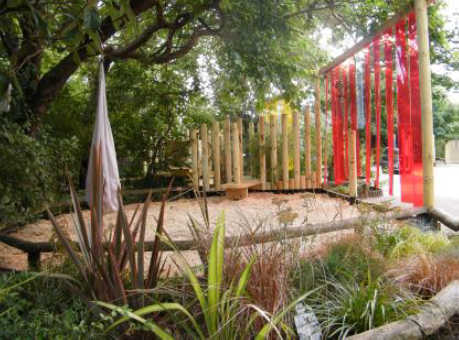
The Importance of Bespoke Outdoor Spaces for SEND Schools
Creating any form of play space comes with its challenges and need for creating solutions, but even more so for schools that provide special educational support. When designing a SEND playground there are many more aspects that need to be considered. Most specifically, making sure that the space is appropriately structured to accommodate the changing needs of all the pupils that may use it.
This then creates the question of how to create a space that specifically caters for children with diverse needs. Each space should make room for green spaces with canopies, quiet zones, accessible play equipment and sensory areas. Sensory play is essential for SEND playgrounds, for some children it can be difficult to process their surroundings, by creating opportunities for sensory play, this can help to strengthen the neural pathways in a child’s brain, which improves development in their physical, social, cognitive, and sensory recognition.
Sensory Gardens
These offer fun as well as educational benefits through the exploration of all senses. To be able to tick the boxes of a sensory garden it needs to be able to be explored by touch, sight, scent, taste and hearing.

By using different surfaces, objects, and plants, you can create a great environment for sensory play. Some examples that really work well to stimulate the five common senses are bamboo, bark, lavender, mint, rosemary, sand, ponds, pebbles and stepstones. The sound of the bamboo in the wind, to the smell of the lavender, the feel of the different textures beneath your feet and the taste of the fresh mint, they all come together in contributing to the full sensory experience.
Having a sensory garden in all schools has been proven to be of great benefit. Sensory stimulation creates a promotion of physical activity and challenges, as well as a sense of community and participation, which all help to reduce behaviours of agitation and or aggression. It also provides a space for meditation, reflection and the opportunity to release stress in a safe and calming environment.
Outdoor classrooms
These are a great way to provide pupils with variety and natural inspiration which has been proven to help with focusing and cooperation with staff and peers inside the classroom.
They also create a therapeutic environment which can also transition into being a quiet space for children that may be feeling overwhelmed and inverted during the school day.
Broadfields Primary School, Outdoor Classroom
Socialising

Another area of play to consider is something we do on a day-to-day basis, and that is to socialise and form relationships. Socialising is important for children as it helps to develop their language, empathy and cooperation skills, but for some children socialising does not come easy and is a scary process. This can be supported by incorporating spaces such as sandpits, which encourage social play in a calm, natural space, where they can feel safe and not pressured.
Integrating musical instruments into a space can also help with socialising, it’s a fun way to engage with sound, as well as inviting the chance to interact with other pupils.
Multi-Sensory Equipment
Multi-sensory equipment is proven to be beneficial for children’s ability to concentrate and improves behaviour and mental health. Introducing full body exercises into play releases endorphins which helps to reduce anxiety and the build-up of stress. Autistic children and those with ADHD sometimes struggle with being able to regulate energy, control and coordination, a trampoline is a great way to support this. The repetitive movements of jumping sooths, improves balance and reduces high levels of energy. For all children a trampoline helps their ability to focus and feel energised for a day ahead of learning.
Another great way to introduce multi-sensory activities into a play space is with a sensory or nest swing. The gentle back-and-forth motion helps calm overstimulated children, improves balance, and develops important motor skills; they also help to strengthen the vestibular system. In addition, sensory swings that enables a child to sit within the fabric helps with deep pressure therapy, another plus for any SEND school.
Conclusion
It is important that in a SEND play area no child is left out and by providing spaces tailored to meeting the variety of needs to a high level of quality, the school leaders can feel comfortable in knowing that the children have been provided with the best possible chance of achieving inside and outside of the classroom.
Find out more about designing bespoke play areas...


